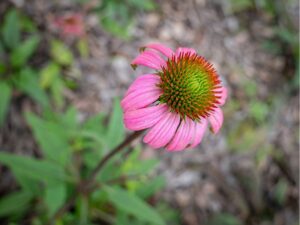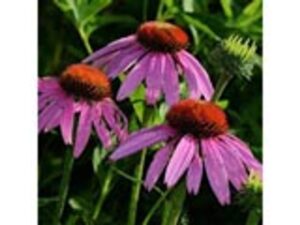by CMG Betty J
Purple Coneflower, Echinacea purpurea, is a purple or violet-colored, daisy-shaped flower of the Texas Hill Country. Its native distribution is from Florida to Texas and north to Virginia and Iowa. It grows in sun or part shade in well-drained limestone, sandy, or clay soils and is found naturally in open woods, thickets, and on the prairie.
This popular perennial sports tall stems with a long-lasting flower head at the top. Each flower has a domed, purplish-brown, spiny center and drooping lavender rays. The genus name is from the Greek echinos, meaning hedgehog, an allusion to the spiny brown center. The bloom period is from April to September here in Texas. Most of the simple leaves are basal, that is, growing at the bottom of the plant, close to the ground, with a few smaller leaves growing up the stems. The leaves are rough with stiff hairs.

Purple Coneflower
The Purple Coneflower is an attractive addition to any garden. The flowers are long-lasting and make good cut flowers. They are especially attractive to butterflies and hummingbirds. Since their seed production is so prolific, they may become aggressive in the garden. However, this same attribute makes seed collection easy in the fall. They can be sown from seed in fall or spring. Plants are also available commercially. Coneflowers are not deer resistant.